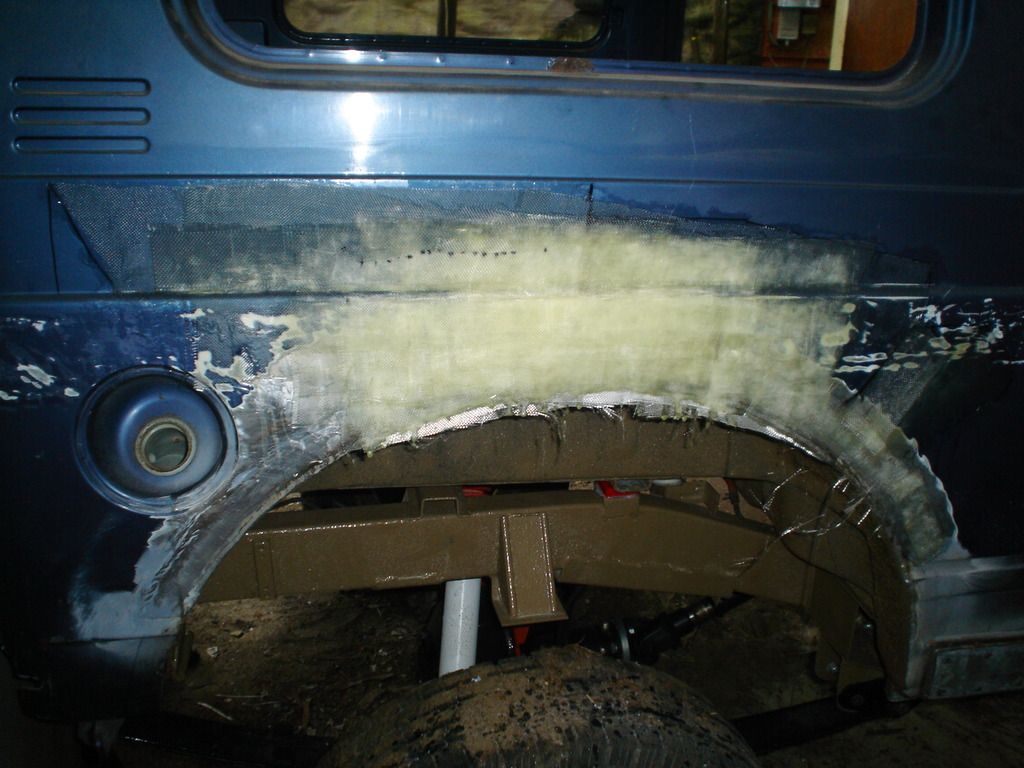I did this for two reasons........one, I will be bolting on large plastic fender flares, and the bolts will be going through the repairs. I didn't want the bolts going through 1/4" thick plastic body filler.
Secondly, I just didn't want plastic filler 1/4" thick!
Anyway, I still have epoxy primer to apply, fiberglass strand plastic filler, regular plastic filler, Nason high build urethane primer, and Imron paint to go.
This won't be completed this fall.......i work outside under a costco carport, and the fall rains are almost here, putting an end to my body work efforts for the year. I want to get the fillers, high build primer on these fender repairs, and cover it with some temporary *?what?* to waterproof the repairs for the fall and winter weather until I can resume the build in the spring.
Questions please;
After grinding / sanding down the fiberglass cloth high spots, and exposing the bare metal around the perimeter.......should I spray with epoxy primer? Over the fiberglass too or just the bare metal spots?
Should the Evercoat brand short strand body filler go directly over the [ ground-down ] glass cloth and over the bare metal.....skipping the epoxy primer?
What should / could I cover the high build primer with, to avoid moisture absorption over the winter?
Thank you for your thoughts

